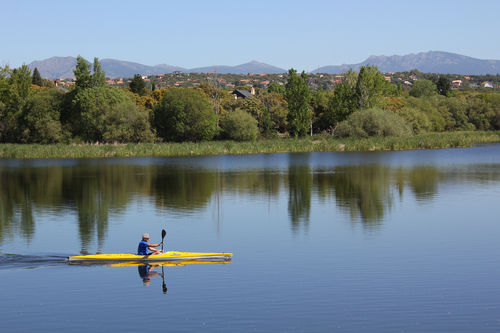The Salmon River drainage is divided into five different whitewater segments each with its level of difficulty and personality. The Main Salmon River comprises three segments which are; the Lower Salmon, the Main Salmon-(the middle section of the river) and the Upper Salmon. The Middle Fork and the South Fork of the Salmon River are the other two segments of the Salmon River drainage.
The Upper and Main Salmon
The Upper Salmon begins in the Sawtooth Mountains. Paddling through this stretch of the river close to Stanley, Idaho, you will see beautiful mountain scenery and encounter moderately challenging rapids.
The middle part of the Main Salmon River flows through a remote and deep canyon at the center of Idaho’s backcountry. There you will find more than 80 miles of the river categorized as Wild and Scenic.
Floating on this particular portion of the river is highly in demand and due to this; private kayakers and rafters enter an annual lottery in February to try their luck in securing a summer permit to paddle on this section of the river.
The Lower Salmon
The Lower Salmon section starts around the town of Riggins, Idaho. On this stretch of the river, the river canyon is more arid and open. The pine tree and rock canyon walls of the Main Salmon open up to broad compasses of canyon vegetated with grasses and sage.
Where the Lower Salmon narrows, you will encounter rapids of medium difficulty. Permits to paddle on the Lower Salmon are available on request.
The South Fork of the Salmon
Remote, challenging and wild, the South Fork of the Salmon taunts the experienced kayaker to put their skills to test. Catarafts and Kayaks are usually the crafts chosen for this boulder-filled, steep and narrow river that ends near Mackay Bar.
The Middle Fork of the Salmon
The waters here churn and twist for over 100 miles in Idaho’s mountain wilderness. The rapids are relatively continuous and among the most challenging. You can apply for a permit through the February lottery.
River Difficulty Ratings, Dangers, and Level of Experience
The difficulty of rapids mostly depends on water flow. Springtime usually brings fast and high water flow making kayaking more dangerous than when the river is at normal flow. On the other hand, low water flow makes it more difficult to navigate around rapids increasing the danger of crashing a kayak or raft on a rock.
River difficulty is rated on a scale of one to five (i, ii, iii, iv and v). Class (v) means that the water is life-threatening, class (iv) the water is very difficult and highly risky to paddle and may result in injury or loss of equipment, class (iii) the water is moderately challenging even to the experienced paddler, class (ii) the water has safe waves where maneuvering is easy when going around obstacles and class (i) indicates flat moving water.
The Upper Salmon is mostly class (ii)-(iii). The Main Salmon section class is (iii)-(iv) and the Lower Salmon class is (ii)-(iii) but has class (v) rapids when the water flow is high, the Middle Fork and South Fork have class (ii), (iii) and (iv) however, the South Fork has several class (v) rapids.
Class (i) and (ii) waters won’t present much of a danger to beginner and intermediate kayaker. However, novice kayakers should first master some kayaking skills before advancing to class (ii). Experienced kayakers, on the other hand, can paddle in class (iii) and (iv) depending on how skilled they are.
When kayaking in the Salmon River, you are likely to see a range of wildlife like bears and elks at the river banks. Eagles are also common and may likewise see salmons especially during mid-summer to late fall.
There are also fantastic views of farmlands and dense forests across the Salmon River. The river also has deep pools for swimming and plenty of fish, so when planning a kayaking trip to the Salmon River, along with a quality kayak, bring along your fishing gear and swimsuit.

